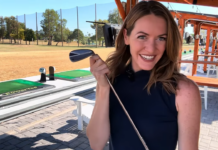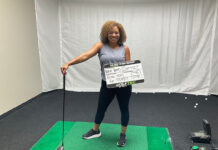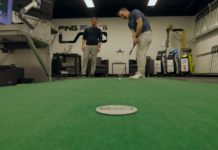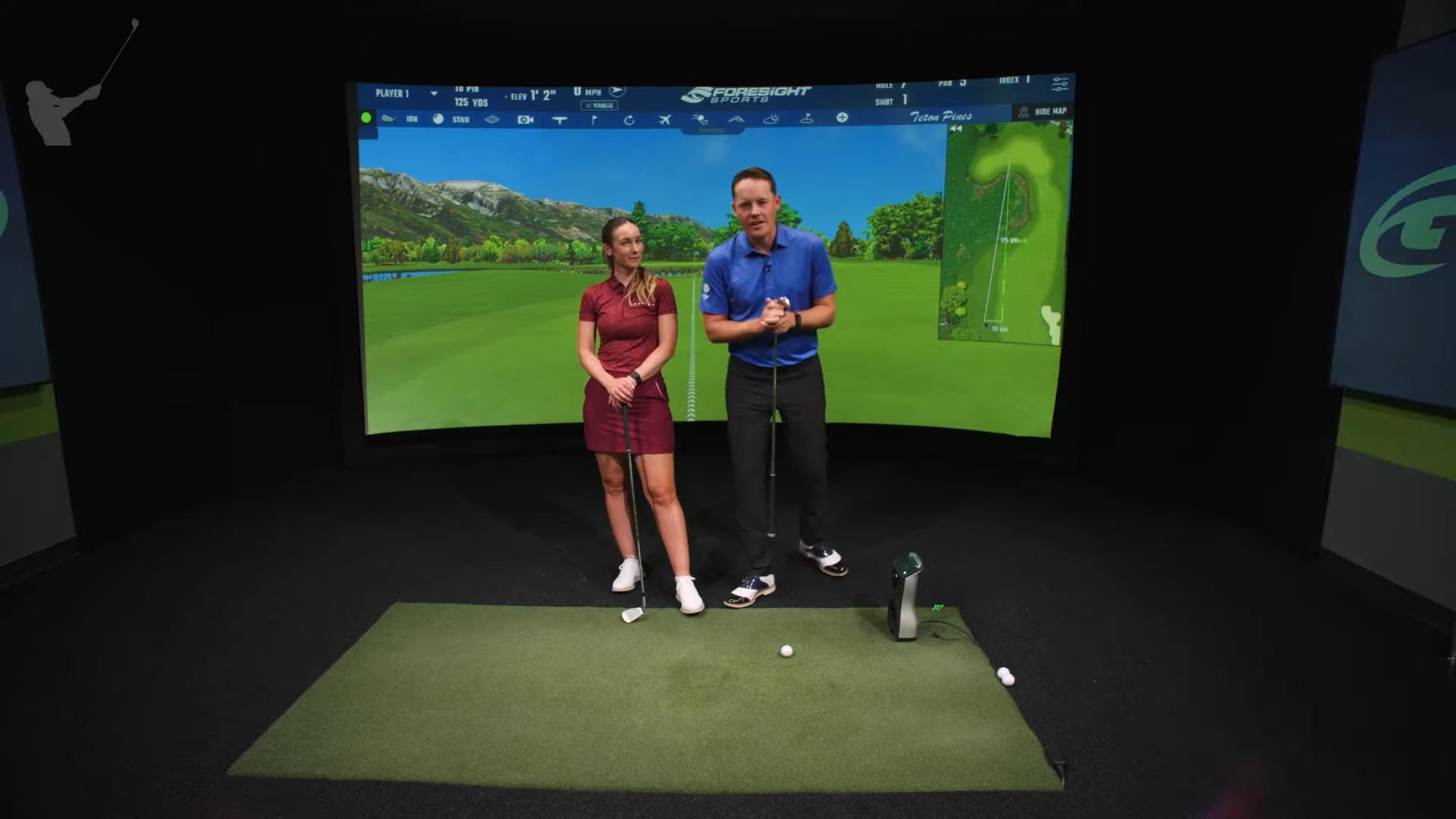We test a pro vs 18 handicap from 125 yards over water
By Ryan Gager
In the game of golf, certain shots can pose a challenge, even for pros and elite amateurs. One such shot is an iron to a green over water. It’s a situation where many golfers struggle and often fall short of their expectations. In this edition of Fix My Fault, GOLFTEC Athletes Hannah Gregg and Fredrik Lindblom share their tips on how to play this shot effectively, and realistic outcomes you should expect. By managing our expectations, choosing the right club, and adopting a smarter course management approach, we can elevate our game and improve our scores.
Choosing the Right Club
For this particular shot, 125 yards over water, Hannah chooses to play it safe and opts for a nine iron. The rationale behind this decision is to ensure she clears the water without risking a big number on the scorecard. By taking an extra club, she effectively increases her chances of success. It’s crucial to assess the situation and make a calculated decision based on your ability and the hazards in play.
Fredrik emphasizes the importance of managing our dispersion and avoiding the water hazard at all costs. The average amateur player tends to hit their shots from 125 yards to an average of 45 feet away from the hole. To mitigate the risk of landing in the water, we should aim to move our dispersion longer by using a club that allows for a greater carry distance.
For example, instead of relying on a 125-yard club, consider using a 135-yard club. While this might occasionally result in slightly longer shots, the majority will land on the fringe or in the fairway behind the pin. By prioritizing safety and avoiding disaster, we can prevent the frustration of losing a ball and save strokes on our scorecard.
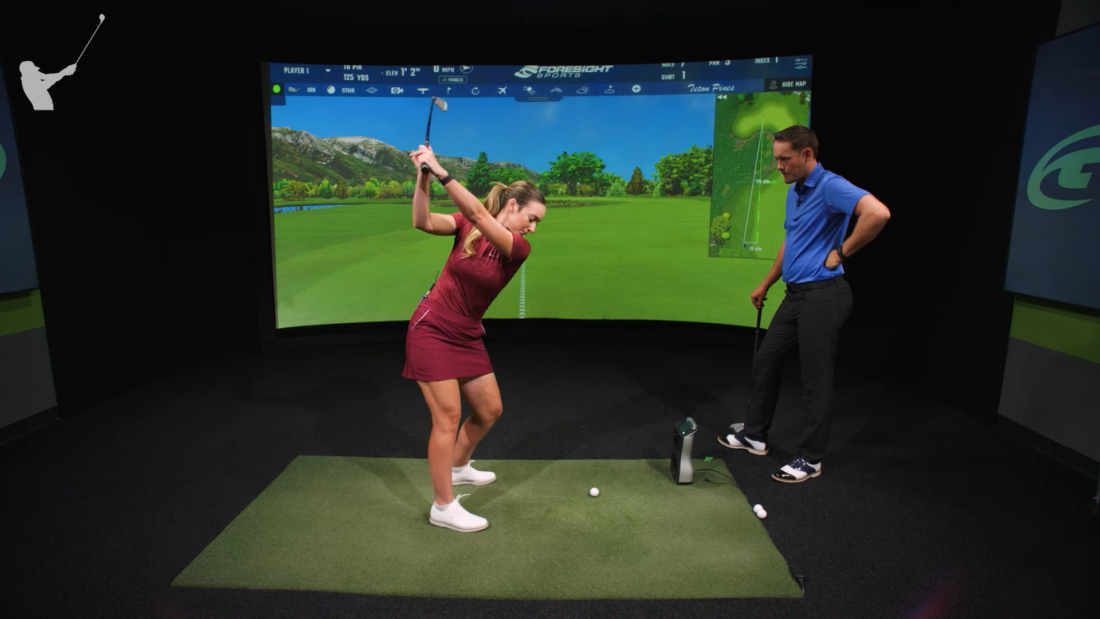
Manage Your Expectaions
It’s important to set realistic expectations when facing challenging shots like these. The best players on the PGA Tour end up around 20 feet from the pin on average on shots from 125 yards in the fairway. Therefore, if you hit your shot to a similar distance, it’s actually a great achievement. Recognizing this helps us avoid becoming disappointed or disheartened with a “good” shot that didn’t match our lofty expectations.
By acknowledging the gap between our own skill level and that of professional players, we can better appreciate the importance of playing within our limits. Rather than attempting to replicate the feats of the best in the world, focus on making smart decisions, hitting sufficient club, and avoiding costly mistakes.
To successfully navigate a 125-yard shot over water, adopt a thoughtful approach like Hannah Gregg. Understanding the carry distance of your club is crucial. For instance, if your 135-yard club carries around 136 yards, you can swing smoothly and confidently, knowing that it will safely clear the water.
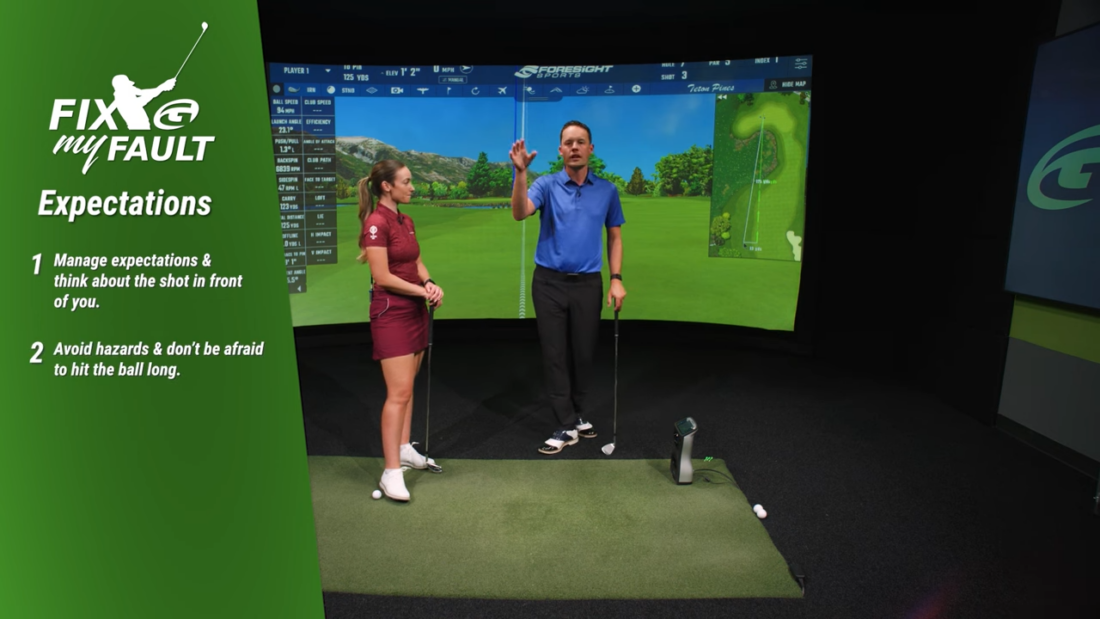
Mastering the art of playing iron shots, especially those requiring precise distance control over water, is a skill that can significantly impact your golf game. Remember, it’s not just about hitting the perfect shot—it’s about playing smart, avoiding disasters, and improving your overall score. So, next time you find yourself facing a challenging 125-yard shot over water, channel the insights shared by these professionals and enjoy a more successful and rewarding round of golf.
For more help with your game, including dialing in your iron distances, working on your swing or course management, look up a local GOLFTEC near you and talk with a certified GOLFTEC Coach about how they can help you play your best.
Check out other course management videos from GOLFTEC below, including par 3 strategy and knowing your shot pattern, both from Golf Digest Top 25 Teacher, Nick Clearwater.
Interested in more instructional content from GOLFTEC?
Fill out the form on this page and you’ll be subscribed to future emails with great videos, tips, drills, and more.
A local Coach will also contact you to discuss your game and how lessons or a fitting at a local Training Center may benefit you.






